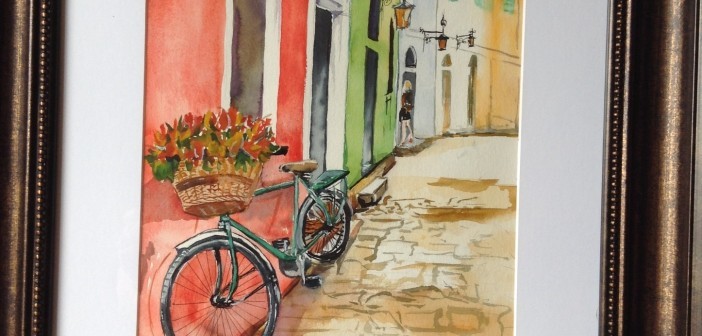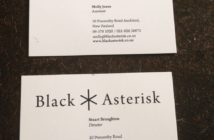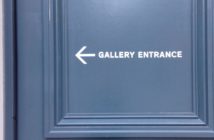Maori and early European missionaries treked over the Kaimais to Tauranga on tracks some of which came through Whakamarama but have now merged back into the forest and bush. I’m chugging up State Highway 29 through Tauriko on my way to Putaruru and Tirau and then back through Matamata. Previously part of rural Tauranga and Western Bays residential, commercial and industrial development is invading Tauriko. There are still honey and produce outlets and into the Kaimais there’s a Woolshed Cafe and an animal park. If you’re just looking you might even want to stop off at McLaren Falls Park in rural Omanawa.
State Highway 29 is the main road link to and from the Port of Tauranga and no matter what day of the week you’ll pass truck and trailer units loaded to the gunnels crawling up and gearing down. This Sunday morning there are fewer trucks and more weekend travellers roaring up the passing lanes as if escaping a tsunami.
PUTARURU: I turn off for Putaruru at the bottom of the Kaimais. I’m in the Waikato now and heading down to the South Waikato. This is heartland New Zealand – dairying and cropping merging into forestry with little rural service towns. It’s also developing as heartland tourism – the parking area to the Te Waihou Spring walkway is crowded with cars. Putaruru was a farming and forestry town. It’s on State Highway 1 and is a classic junction where if you’re travelling you’d be looking for coffee, food and clean public toilets. There’s strip building along the road but the township itself is over the railway line. To an outsider it’s always looked a bit down and a bit sad as a township but that’s changing.
Coming from the North you go through Putaruru to Arapuni to access the Waikato River Trails – biking and walking trails. I see a new cafe on the main road, a large B&B sign and in the former district court a small artcraft and craft gallery is operating. A former timber company site is slowly being developed into what looks like a community group centre.
Ironically Putaruru is home to The Plaza “..a large, flexible venue that accommodates an audience of 5 to 500…the South Waikato’s premium performing arts centre… The Plaza is run by a non-profit trust…” Later in the afternoon my Matamata friend tells me that it’s because of The Plaza orchestral and other performance events can be brought to the South Waikato.
On one of the pages of the South Waikato Arts Trust’s promotional brochure are reasons why you should choose the South Waikato. And, laugh out loud, they’re the reasons I’d thought of Putaruru as a place to move to – it’s so central, it’s a gateway, there’s huge potential to build on the natural attractions such as the Te Waihou Spring walkway and the Waikato River Trail. Just “up the road” is
TIRAU: A former rural service town Tirau developed into a “destination”. Boutique shops, galleries and lots of cafes. Noted for its quirky corrugated iron buildings and signs Tirau appears to be getting over a strong recessional kick. Some empty shops and the main accommodation business with a for sale notice. Still there’s plenty to eat and see here and for the traveller the i-site toilets are great! The i-site is housed in one of the large corrugated iron buildings , I think it’s a dog. The inside walls are decorated with the most beautifully painted mural representative of the surrounding region and its activities; the work of the late Fred Luckman. The mural and a similarly themed stained glass window make any visit to Tirau worthwhile.
ART on MAIN on the Tirau Hill “is a collective gallery of New Zealand artists displaying new and original work or paintings, pottery, craft and photography” The gallery is housed in a large old building and contains a huge amount of work of different disciplines and styles. Established creative Fiona Tunnicliffe has her signature pottery cows and horses. There are her small brooches and earrings. Beautiful rimu furniture nestles against some of the walls. Of the paintings I particularly like the work of Lynette Smallwood “Sleeping Sands” and “Lights on the water” evocative of l’heure bleu. I laugh at and love the work of Te Kuiti painter Raewyn Constable, in fact her watercolour of the parked up line of stock trucks is my favourite of all the work on display. Raewyn Margan’s “Egmont from Mokau” is another work I particularly like along with Pamela Lines’ “Sunset”.
I lean against my car and eat a muffin from the Italian Baker before I crank back over to
MATAMATA: home of “the enchanting village of Hobbiton.” In the main street of Matamata young overseas tourists are having photographs taken sitting in a huge Hobbit chair on the grassed median strip. Outside the i-site there are again visitors having photographs taken. Opposite the i-site a tourist souvenir shop is doing business. This i-site is amazing. It’s been transformed into a replica of a Hobbit building. It’s the same inside – magical. And it’s full of tourists finding out about the region and tours. Waiting outside is one of the Hobbiton Tours buses. The tours to the Hobbiton Movie Set are popular all year round peaking over the New Zealand summer months. A professionally presented commercial venture, the promotional brochure for Hobbiton is a souvenir in itself. The value of Hobbiton to the area is clearly stated in the Matamata Morrinsville Te Aroha Visitor Guide.
Longtime Matamata resident Belinda Rowson tells me Matamata “is abuzz with things.” The Council Domain with its historic Firth Tower Museum and associated buildings is a landmark. There’s strong community support for this testament to Matamata’s early European settlement and development. Belinda tells me there’s a working bee every Wednesday with 30 to 40 community volunteers. Apart from the concrete “folly” Tower itself and the collection of traditionally New Zealand wooden buildings (homestead, cottage, original Union Parish Church) there is a big machinery shed, a cow shed and wool shed). A major community funding support is the huge annual book fair run by the hard working Historical Society.
The area has a strong arts society with its own building at the Firth Tower Museum. A musical theatre group also has its own premises as does a drama society. Not surprisingly there’s a strong country music club. And the area is home to an award winning brass band. There’s a strong writer’s group. At least four book clubs. Belinda belongs to one organised by the Workers Education Association. There’s an annual fee of $50. and each member receives a month book with a set of notes and questions. Continuing Education has about 80 people attending its regular lectures – $2.00 each. Previously organised by Waikato University this is now run by community volunteers. A Probus Club hosts regular speakers. There’s The Ladies Senior Choir and The Grey Warblers if you’re looking for somewhere to sing. There’s also award winning Longlands Farm and restaurant – site of many notable family celebrations. There’s always been events at the Hall – earthquake strengthening’s a current issue. People also travel down to Putaruru for events at The Plaza.
About two and a half years ago after finding out about the joys of the ukelele at a Katikati Jazz Concert a ukelele group was started. Belinda says they originally taught themselves to play using a book and a CD. The group’s come a long way since then with it’s own music teacher and programme director (who extends performances with trumpet and harmonica). Clad in red tops, black trousers and sometimes red sparkley bowler hats this group not only has “lots of laughs” but performs around the district and is all ready “booked up for Christmas”.
There is a strong retirement presence in Matamata. There’s a Friendship Circle with a committee of 20 that’s been going for 43 years. It brings people around the town together. There’s entertainment and an afternoon tea. Belinda says it’s supported by all the local groups who take turns to provide the entertainment and afternoon tea. It’s Church based and the Minister attends. Belinda says it’s “such a lot of laughs”. Every group in town seems to have a pianist and there’s always music and singing.
Belinda also belongs to Focus a group which meets monthly for a meal together and to listen to a speaker. The group has four sections – they take turns to organise things. There’s a regular meal at someone’s home for which members contribute the same cost as a restaurant meal. There’s also a regular small raffle. The money raised is donated to “women and children”.
Matamata is a developing town and attracts “young” retirees from Auckland. Belinda mentions one of the newer developments and tells me that there are three new development areas around the town and hopefully the cycle trail from Te Aroha will be extended to Matamata. There’s commercial/industrial development taking place at Waharoa on Matamata’s northern outskirts which will attract even more population.
Driving down Matamata’s main street or through Tirau and Putaruru you wouldn’t necessarily think there would be such an extensive network of art and culture bubbling away. Well there it is and it’s as valid for these communities as the Museum of Metropolitan Art. It’s also interesting to see the pages of accommodation available around Matamata, the eateries and the galleries, historical sites and places of interest in Morrinsville and Te Aroha – but we’ll leave those towns for another day.
Rosemary Balu





